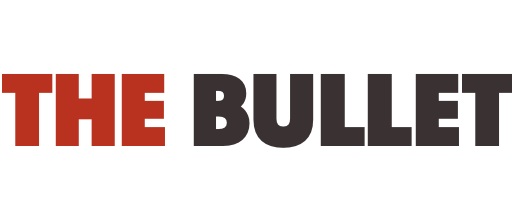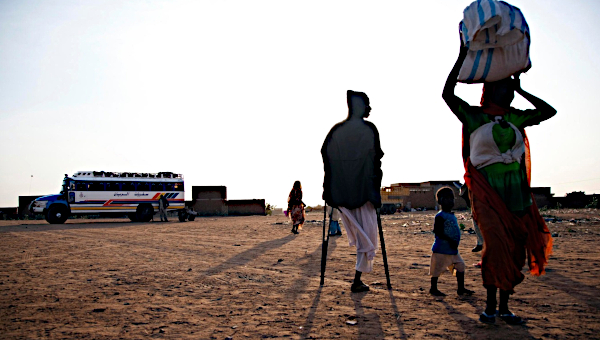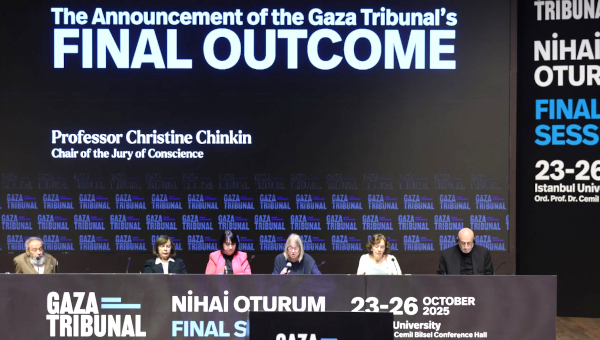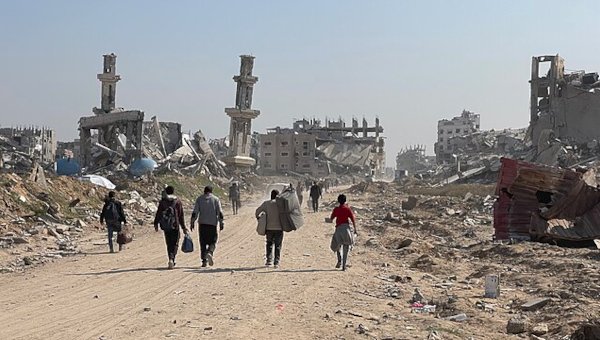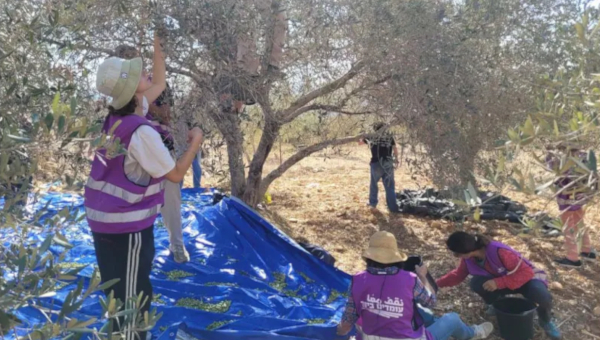The Deadly Tango of Netanyahu-Khamenei
Exactly ten years ago, in an article titled “The Political Tango of Netanyahu and Khamenei” published in Open Canada, I noted that although there may seem to be no two political leaders who hate each other more than these two, at the same time, they are deeply reliant on one another to cover up the chaos they’ve each created within their own countries. Now, ten years later, this dance continues – still with the same theme, but now with a much more dangerous and deadly rhythm, and for Khamenei at least, it has reached a decisive turning point.
Without delving into the historical details of this conflict, it is clear that Israel, from the very start of the 1979 revolution and the fall of the Pahlavi regime – its most important regional ally – was deeply angered. The Islamic Republic, pursuing its reactionary policies and ideological-religious expansion, designated Israel as one of its main enemies and officially called for its destruction. This stance, which had little to do with supporting the Palestinian movement, was the greatest gift to the Zionist right-wing and Jewish fundamentalists. During Mahmoud Ahmadinejad’s presidency, Israelis even publicly claimed he was “God-sent.”
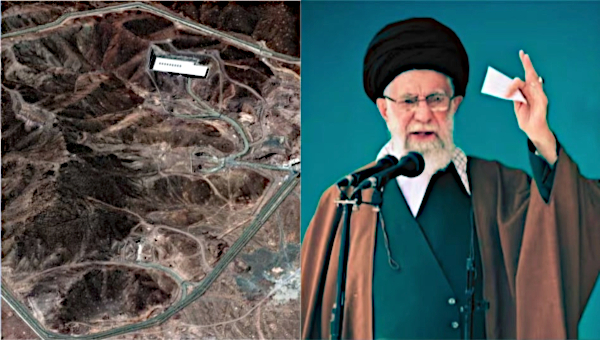
The Context of the War
It’s no exaggeration to say that the most extreme and reactionary government in Israel’s history, currently in power, is in part a byproduct of Iran’s ruling Islamic fundamentalist policies. The Islamic regime’s creation of proxy forces like Hezbollah in Lebanon, Hashd al-Shaabi in Iraq, and its influence over groups like Hamas in Gaza and the Houthis in Yemen, all served to expand this reactionary agenda. As these activities intensified, so too did the strength of Israel’s right wing. Netanyahu, like his co-dancer in Iran, has been the longest-serving leader, holding the position of Prime Minister across three separate terms, totalling about 21 years. He has skillfully exploited the Islamic Republic’s foreign policy to strengthen Zionist right-wing politics, weakened progressive Israeli forces, and simultaneously delivered harsh blows to progressive Palestinian movements.
Besides strengthening proxy groups across the region, the Islamic Republic advanced its controversial nuclear and missile programs, giving Netanyahu and his extremist faction the perfect excuse to portray Iran as an “existential threat” to Israel and rally international Zionist forces and pro-Israel lobbies, especially in the US, against Iran.
As I have detailed elsewhere, Zionist policy from the start has revolved around two core objectives: territorial expansion and population replacement – i.e., displacing Palestinians and bringing in Jewish immigrants from elsewhere. To justify these aims, the right-wing extremist Zionists have continually needed to beat the drum of existential threat. After overcoming the Palestinian movement and several wars with Arab states, and with no real danger remaining from those fronts, they required a seemingly powerful new enemy to maintain momentum through fear. The establishment of the Islamic Republic after the revolution’s failure created that perfect enemy.
In the meantime, Netanyahu, condemned in Israeli courts for various corruption charges and also facing international legal challenges, found himself in danger of being ousted. Fearing imprisonment, he sought a pretext to expand the war.
The fundamentalist Hamas movement in Gaza, which Israel itself played a role in creating and which later came under the Islamic Republic’s influence, became a symbol of this “existential threat.” The surprise and brutal October 7th attack, which led to the massacre of many Israeli civilians and hostage-taking, created the perfect context for genocide and mass killing of Palestinians and the destruction of Gaza, which continues. Simultaneously, Israel expanded its settlement construction and seized more territory in the West Bank.
The ruling right-wing in Israel used this moment to strike hard at Iran’s proxy forces. In a swift campaign, alongside the assault on Hamas in Gaza, it effectively dismantled Hezbollah in Lebanon, and even set the stage for the fall of Bashar al-Assad, Iran’s main regional ally.
In response to losing its proxies, the Islamic Republic doubled down on its nuclear policy, reportedly enriching uranium to 60%, according to the International Atomic Energy Agency (IAEA). Netanyahu repeated the same claim he made 12 years earlier – back then using a ridiculous cartoon of a bomb before the UN General Assembly – asserting that Iran was nearing the capability to produce a nuclear weapon, this time again without providing any evidence.
But Netanyahu’s government now faces a major contradiction in its strategy: On one hand, the Islamic Republic serves as the perfect scapegoat, enabling Israel’s use of fear politics and territorial ambitions, making its survival strategically useful for Israel. On the other hand, it poses a potential existential threat.
With Trump’s rise to power – despite being Israel’s biggest supporter – things grew more complicated. Because he promised his ‘MAGA’ base not to engage in new wars, Trump expressed a readiness to negotiate with Iran over its nuclear program. Sensing an opportunity, Netanyahu and his allies, having largely neutralized Iran’s proxies, seized the moment and – with Trump’s approval – launched a surprise and deeply humiliating attack on the Islamic Republic to prevent any deal from taking shape.
The ‘What Will Happen’ Puzzle
The main question for everyone is: “What will happen?” This question is mainly directed at the Islamic Republic, and specifically, its Supreme Leader. As for Israel, its direction seems relatively clear for at least the next few years, so I won’t focus on it here. I will only mention that Israeli right-wing factions will continue pushing their reactionary policies with greater force. However, Israel’s future doesn’t look promising. If progressive forces in Israel remain passive, Israel’s future could resemble that of today’s Iran: a religious fundamentalist regime, which is another discussion altogether.
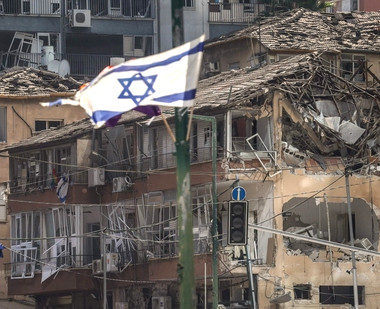
As for Iran, many questions remain: Will the Islamic Republic fight to the last missile and drone? Will it enter negotiations with the US and accept humiliating terms? While definitive answers are unavailable at this moment, it is essential to identify the main pieces of the puzzle and begin assembling them. These key components – both domestic and international – are: the Islamic Republic regime, the Iranian people, the opposition, and foreign powers. Each of these is composed of smaller, non-monolithic factions.
The Regime: At the top of the Islamic Republic sits a clerical/military/economic oligarchy. A segment of this leadership is deeply religious, devoted to Vali-e Faqih (Guardianship of the Islamic Jurist), and genuinely believes in the imminent appearance of the Mahdi (the Twelver Shia Messiah), seeing the current time as an ‘apocalyptic era’ signalling his return. These people are not concerned with losing current privileges – they await heavenly rewards. Some see Khamenei’s leadership as a proxy, while others support alternative candidates like Ali Yaqubi. It’s safe to assume their istikhara (prayer-based decision) has turned out ‘favourable’ for continuing the war until Israel is destroyed. Traffic to the Jamkaran (a well near the holy city of Qum, where they believe Mahdi resides) is likely busy these days!
Beyond this group, a large portion of the regime’s oligarchs are deeply worried about their political and economic standing. Let’s not forget that the regime has spawned a massive capitalist class among clerics, military leaders, major merchants, and their families. Chaos in Iran threatens even the monopolists and profiteers who currently benefit from the country’s failing economy – they have much to lose. This group, along with so-called reformists, are certainly opposed to anarchy and regime collapse. The question is whether they will remain passive and let the Supreme Leader carry on, or whether they’ll act – perhaps by pressuring him to step down, or even sending him for a swim in a pool (a dark reference to past suspicious deaths).
The Iranian People: A segment of the population, due to religious beliefs or dependence on various regime-funded religious foundations (such as the Imam Khomeini Relief Foundation, Martyr Foundation, etc.), will follow whatever the regime’s top leadership decides. This includes millions, as I’ve documented elsewhere.
But the majority of Iranians – young people, women, the new middle class, the working class, political prisoners, and retirees – not only do not oppose regime change, but welcome it. Yet they also fear chaos and disorder. A look at the statements from various civic organizations shows that they condemn both opposing forces.
The Opposition: ‘Opposition’ is a meaningful word: it refers to a political force capable of forming a shadow government. In Iran’s case, we do not have a true opposition – what we have are regime critics, almost entirely based abroad. These critics can be analyzed using a biplot three-dimensional matrix: Right vs Left, Secular vs Religious, and Inactive vs Extremist.
In the right–secular–extremist corner, we have the monarchists, led by Reza Pahlavi, the former crown prince, and his wife. This group hopes to restore the monarchy in Iran with US and Israeli support. Some of their supporters, especially those led by Pahlavi’s wife (nicknamed the “Shahollahis”), are already drawing lines and making threats.
On the left–secular–extremist side, radical socialist groups are advocating for immediate socialism under working-class leadership. The left–religious–extremist quadrant includes the MEK (Mujahedin-e Khalq), who hope to bring their exiled hidden leader back with American and Israeli help.
Each of these categories also includes moderate left, liberals and secular and religious groups (Melli-Mazhabi) who could potentially collaborate against the regime. But so far no serious efforts toward unity have emerged.
In the right-religious camp, some former insiders of the regime might, under certain circumstances, align with opposition forces. Overall, this fragmented opposition plays no real role in shaping upcoming transformations, though it will jump into the scene if the regime weakens or falls.
Foreign Powers: In today’s US power structure, two competing voices speak into Trump’s ear. One camp focuses inward, opposes US military intervention – even in support of Israel – and is even quietly antisemitic. The other camp is pro-Israel and favours US military presence worldwide. Which of these will ultimately shape US policy on the Iran-Israel war remains to be seen, although it seems the pro-Israeli camp has so far succeeded in convincing Trump and dragging the US into the war against Iran. Let’s not forget that in the first round of indirect talks, the US had no objection to limited uranium enrichment. But as soon as this was made public, the US Secretary of State demanded zero enrichment, revealing that Netanyahu and his Zionist supporters had swayed Trump.
European powers, though fully supportive of Israel, have no interest in prolonging the war or toppling the Islamic Republic, fearing regional escalation. However, if the war drags on, they will side with Israel and the US.
Russia, meanwhile, benefits from the Iran-Israel conflict because it diverts global attention from the Ukraine war. At the same time, it wants to preserve its ally, the Islamic Republic, and may try to act as a mediator to boost its international standing.
Arab countries, previously hostile to Iran’s policies, now want the war to end quickly and avoid regional escalation.
Israel, which is surprised by the speed of its success in destroying Iran’s defensive capacity, damaging nuclear and missile sites, and eliminating key military leaders and scientists, has now raised the idea of regime change, hoping to install friendly elements in power.
Possible Scenarios
Two extreme and unrealistic expectations have been floated. On one hand, the Islamic Republic – despite having done nothing but humiliate the Iranian people – now claims national unity by emphasizing Millat-e Iran (the nation) rather than the Ommat (followers) of Islam. It has suddenly begun referencing Iran as a 3,000-year-old civilization in its propaganda, claiming that the people will fully support the regime. On the other hand, Netanyahu expects Iranians to rise up, overthrow the regime, and pave the way for a friendly government. Both expectations are completely baseless.
If the war continues – especially with deeper direct US involvement – Iran, lacking the military capability to stand against these two war machines, will see its infrastructure, industry, and cities increasingly destroyed. The economy will collapse, poverty will deepen, and the result will be chaos, with no prepared popular force ready to take over. This is the most dangerous scenario.
The fantasies of the Pahlavis (the Royalists) and the Rajavis (the MEK) that they will seize power with US or Israeli help are utter delusions. Regime change by a foreign power cannot be achieved through airstrikes alone – it requires ground forces. In Iraq, after the US bombed everything into ruins, US armed forces entered heroically on the ground. But neither the US nor Israel is willing to launch a ground war in Iran.
Another scenario is that the Islamic Republic might carry out a symbolic retaliatory strike and then enter humiliating negotiations with the Americans, offering major concessions. In this case, the regime would be severely weakened but not collapse. Sanctions relief could provide it with breathing room to continue its corrupt and repressive rule. However, such a development might also open the door to a renewed wave of civil resistance, laying the groundwork for the third scenario.
One of the biggest casualties of this war is Iranian civil society, which reached its peak in movements like ‘Women, Life, Freedom’, alongside protests by workers, retirees, teachers, and truckers. Though currently suppressed, its influence remains visible in emerging organizations and progressive declarations.
A Progressive Stance
So far, two extreme and reactionary positions have surfaced: the monarchists and those supporting continued war, betting on US and Israeli victory, hoping to regain power, and branding any opposing stance as supporters of the Islamic Republic. The regime apologists, like NIAC, and the so-called “Left-Axis of Resistance,’ who call for a ceasefire only to keep the regime in power, and label any criticism as imperialist or Zionist propaganda. Both positions are condemnable. Neither reflects the will of the Iranian people – one serves foreign powers, the other supports internal tyranny.
The proper stance is to condemn both sides of this war – Israel/US as its initiators, and the Islamic Republic as its enabler. Iran’s salvation depends on the fall of the Islamic Republic and its replacement with a secular, democratic, and progressive republic. This will not be accomplished by foreign powers – who themselves contributed to bringing the clerics to power – but rather by Iran’s civil society.
One must hope for a coordinated effort to end this terrible war, resist all forms of foreign domination, and keep organizing progressive forces for regime change by the Iranian civil society. •
This is a translation of a talk by the author in Toronto organized by the Zagross publication, on Saturday 21st June, 2025. While this text was being prepared, following the Islamic Republic’s symbolic and pre-announced retaliatory attack on the Al Udeid base in Qatar, a ceasefire between Israel and Iran was announced by Trump. It appears that, for now, the less dangerous second scenario is being pursued. Given the humiliating defeat and apparent weakness of the Islamic regime in Iran, the prospects for civil society movements advancing toward the fulfillment of the third scenario – replacing the Islamic regime with a secular, democratic and progressive state – seem more promising.

